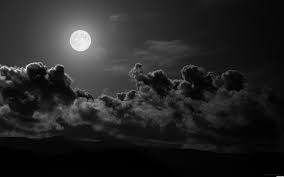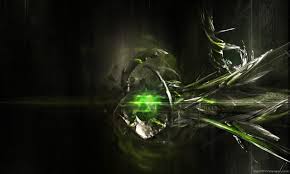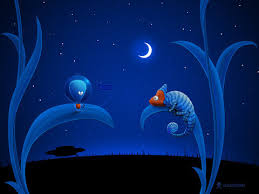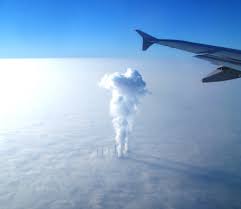Awesome Wallpaper Backgrounds Biography
Ethiopia is a landlocked country located in the Horn of Africa. It is bordered by Eritrea to the north, Djibouti and Somalia to the east, Sudan and South Sudan to the west, and Kenya to the south. Ethiopia is the second-most populous nation on the continent, with over 84,320,000 inhabitants, and the tenth largest by area, occupying 1,100,000 km2. With its capital at Addis Ababa, it is also the most populous landlocked nation in the world.
Ethiopia is one of the oldest sites of human existence known to scientists.[5] It may be the region from which Homo sapiens first set out for the Middle East and points beyond. Ethiopia was a monarchy for most of its history, and the Ethiopian dynasty traces its roots to the 2nd century BC.[9]Alongside Rome, Persia, China and India[10], the Kingdom of Aksum was one of the great world powers of the 3rd century. During the Scramble for Africa, Ethiopia was the only African country beside Liberia that retained its sovereignty as a recognized independent country, and was one of only four African members of the League of Nations. Ethiopia then became a charter member of the United Nations after a brief period of Italian occupation. When other African nations received their independence following World War II, many of them adopted the colors of Ethiopia's flag, and Addis Ababa became the location of several international organizations focused on Africa. Ethiopia is one of the founding members of the Non-Aligned Movement (NAM), G-77 and the Organisation of African Unity (OAU). Addis Ababa is currently the headquarters of the African Union, the Pan African Chamber of Commerce, UNECA and the African Standby Force. Ethiopia has seen a variety of governmental systems after the dynasty led by Haile Selassie was overthrown in 1974.
The ancient Ge'ez script is still widely used in Ethiopia. Ethiopia also has its own time system and the Ethiopian calendar is seven to eight years behind the Gregorian calendar. The country is a multilingual, multicultural and multiethnic society of around 80 groups, with the two largest being the Oromo and the Amhara, both of which speak Afro-Asiatic languages. The majority of the population is Christian and a third of it is Muslim. Both religions have strong roots in the country. Until the 1980s, a substantial population of Ethiopian Jews resided in Ethiopia. The country is also the spiritual homeland of the Rastafari movement. There are 8 UNESCO World Heritage Sites in Ethiopia.
Despite being the major source of the Nile river, Ethiopia underwent a series of famines in the 1980s, exacerbated by adverse geopolitics and civil wars. The country has begun to recover, and it now has the biggest economy by GDP in East Africa and Central Africa. Ethiopia follows a federal republic political system and EPRDF has been the ruling party since 1991. Human rights abuses have been reported in Ethiopia recently.The Greek name Αἰθιοπία (from Αἰθίοψ, Aithiops, 'an Ethiopian') appears twice in the Iliad and three times in the Odyssey. The Greek historian Herodotus specifically uses it for all the lands south of Egypt, including Sudan and modern Ethiopia. Pliny the Elder says the country's name comes from a son of Hephaestus (aka Vulcan) named Aethiops. Similarly, in the 15th century Ge'ez Book of Aksum, the name is ascribed to a legendary individual called Ityopp'is, an extrabiblical son of Cush, son of Ham, said to have founded the city of Axum. In addition to this Cushite figure, two of the earliest Semitic kings are also said to have born the name Ityopp'is according to traditional Ethiopian king lists. Modern European scholars beginning c. 1600 have considered the name to be derived from the Greek words aitho "I burn" + ops "face".








Ethiopia is a landlocked country located in the Horn of Africa. It is bordered by Eritrea to the north, Djibouti and Somalia to the east, Sudan and South Sudan to the west, and Kenya to the south. Ethiopia is the second-most populous nation on the continent, with over 84,320,000 inhabitants, and the tenth largest by area, occupying 1,100,000 km2. With its capital at Addis Ababa, it is also the most populous landlocked nation in the world.
Ethiopia is one of the oldest sites of human existence known to scientists.[5] It may be the region from which Homo sapiens first set out for the Middle East and points beyond. Ethiopia was a monarchy for most of its history, and the Ethiopian dynasty traces its roots to the 2nd century BC.[9]Alongside Rome, Persia, China and India[10], the Kingdom of Aksum was one of the great world powers of the 3rd century. During the Scramble for Africa, Ethiopia was the only African country beside Liberia that retained its sovereignty as a recognized independent country, and was one of only four African members of the League of Nations. Ethiopia then became a charter member of the United Nations after a brief period of Italian occupation. When other African nations received their independence following World War II, many of them adopted the colors of Ethiopia's flag, and Addis Ababa became the location of several international organizations focused on Africa. Ethiopia is one of the founding members of the Non-Aligned Movement (NAM), G-77 and the Organisation of African Unity (OAU). Addis Ababa is currently the headquarters of the African Union, the Pan African Chamber of Commerce, UNECA and the African Standby Force. Ethiopia has seen a variety of governmental systems after the dynasty led by Haile Selassie was overthrown in 1974.
The ancient Ge'ez script is still widely used in Ethiopia. Ethiopia also has its own time system and the Ethiopian calendar is seven to eight years behind the Gregorian calendar. The country is a multilingual, multicultural and multiethnic society of around 80 groups, with the two largest being the Oromo and the Amhara, both of which speak Afro-Asiatic languages. The majority of the population is Christian and a third of it is Muslim. Both religions have strong roots in the country. Until the 1980s, a substantial population of Ethiopian Jews resided in Ethiopia. The country is also the spiritual homeland of the Rastafari movement. There are 8 UNESCO World Heritage Sites in Ethiopia.
Despite being the major source of the Nile river, Ethiopia underwent a series of famines in the 1980s, exacerbated by adverse geopolitics and civil wars. The country has begun to recover, and it now has the biggest economy by GDP in East Africa and Central Africa. Ethiopia follows a federal republic political system and EPRDF has been the ruling party since 1991. Human rights abuses have been reported in Ethiopia recently.The Greek name Αἰθιοπία (from Αἰθίοψ, Aithiops, 'an Ethiopian') appears twice in the Iliad and three times in the Odyssey. The Greek historian Herodotus specifically uses it for all the lands south of Egypt, including Sudan and modern Ethiopia. Pliny the Elder says the country's name comes from a son of Hephaestus (aka Vulcan) named Aethiops. Similarly, in the 15th century Ge'ez Book of Aksum, the name is ascribed to a legendary individual called Ityopp'is, an extrabiblical son of Cush, son of Ham, said to have founded the city of Axum. In addition to this Cushite figure, two of the earliest Semitic kings are also said to have born the name Ityopp'is according to traditional Ethiopian king lists. Modern European scholars beginning c. 1600 have considered the name to be derived from the Greek words aitho "I burn" + ops "face".
Awesome Wallpaper Backgrounds
Awesome Wallpaper Backgrounds
Awesome Wallpaper Backgrounds
Awesome Wallpaper Backgrounds
Awesome Wallpaper Backgrounds
Awesome Wallpaper Backgrounds
Awesome Wallpaper Backgrounds
Awesome Wallpaper Backgrounds
Awesome Wallpaper Backgrounds
Awesome Hd Wallpapers
Where To Get Awesome Wallpapers For Windows And Mac.